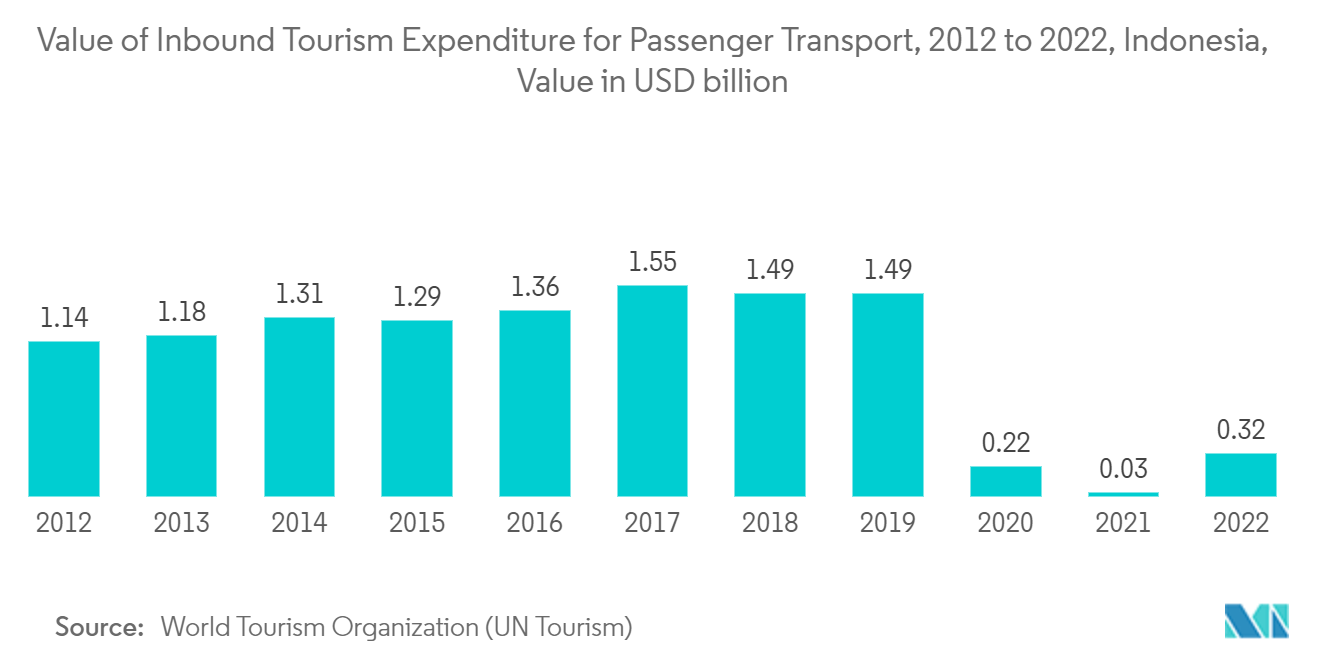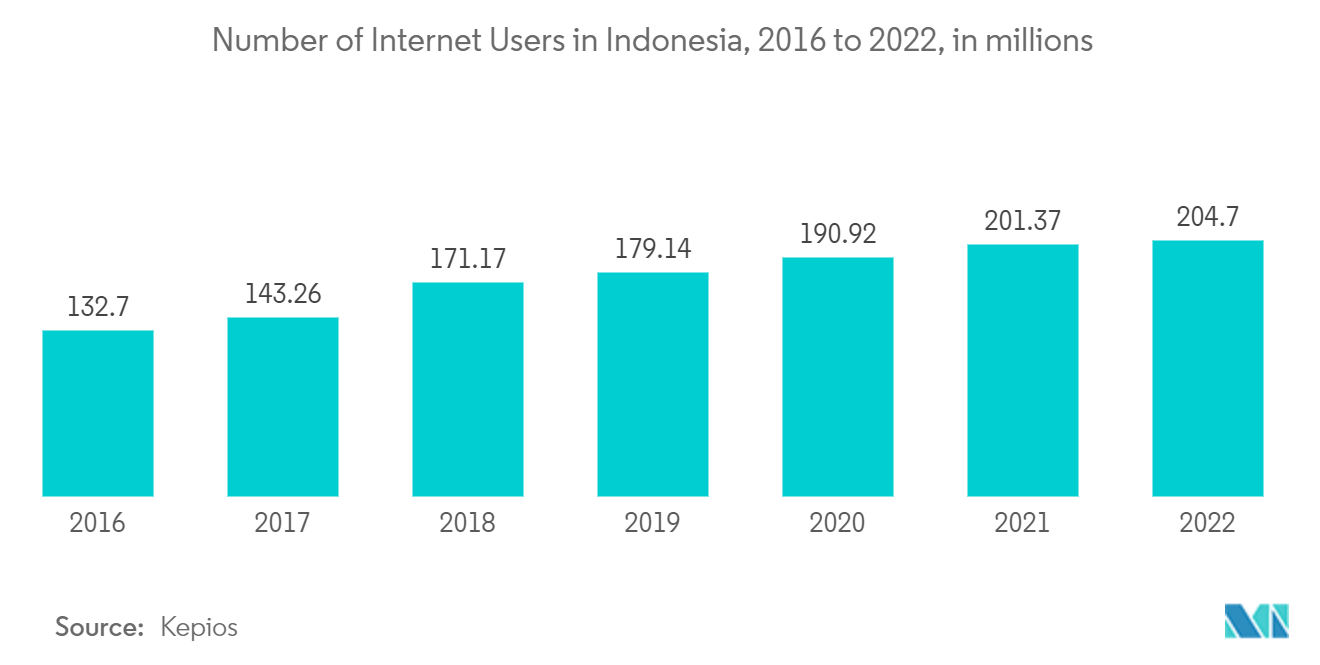Market Trends of Indonesia Ride Hailing Industry
The Personal/Tourism Segment to Positively Drive the Market
Indonesia is the largest archipelago in the world, ranging from Sabang in Aceh to Merauke in Papua. It is made up of thousands of large and small islands connected by the strait and sea, making it the perfect place for tourism. The Indonesian government aggressively promotes tourism globally to achieve 10+ million inbound tourists per year to make it the biggest tourism market.
The Indonesian government has made various changes to the national tourism industry management as a result of the negative impacts of the COVID-19 outbreak. The Ministry of Tourism and Creative Economy aims to attract 1.8-3.6 million international visitors and 260-280 million domestic visitors and generate foreign exchange revenues from the tourism industry of USD 470 to USD 1.7 billion in 2022. Additionally, the government hopes to increase the industry’s share of the GDP to 4.3% in 2022. Minister Sandiaga Salahuddin Uno highlighted the recovery of Indonesia's tourism industry, noting its contribution of up to 3.6% to the national GDP, amounting to USD 6.72 billion in 2022. Domestic tourist trips surged by 19.82% Y-o-Y, reaching 734.86 million trips, surpassing pre-pandemic levels by 1.76%.
The Ministry of Tourism and Creative Economy (MoTCE) in Indonesia, established following a merger in 2019, plays a pivotal role in coordinating efforts to develop tourism and the creative economy, especially in the wake of the COVID-19 outbreak. Collaborations with ministries such as Health, Foreign Affairs, Communication, Information, and Public Works and Housing are integral to enhancing tourism destinations, particularly in priority areas. The MoTCE's budget reached IDR 3.8 trillion in 2022, sourced from government revenue, foreign loans, and non-tax state revenue, reflecting sustained investment in the industry’s growth.
The Ministry of Tourism and the Creative Economy of Indonesia invests in the country's tourism industry to foster sustainable and community-based tourism. Five super-priority tourism destinations, eight special economic zones, and 12 sustainable tourism projects are expected to benefit from the investments, which may boost the demand for car rental services in the coming years.
Owing to such factors, key ride-hailing companies in Indonesia are looking forward to capitalizing on them to resonate with the business and gain better prominence. This trend has elevated the overall demand for ride-hailing services in the market.

Online Booking to Open New Business Avenues
In 2022, a significant 80% of Indonesia's population owned smartphones, with over 212 million people accessing the internet via mobile devices. This robust mobile connectivity underscores Indonesia's position as the fifth-largest mobile market globally, with more than 7.7 billion app downloads and users spending a collective 179 billion hours on mobile platforms in the same year.
With smartphone adoption alongside the rising population of Indonesia, people have quickly shifted their respective stances toward hailing online cars. In addition, tourists and local people have been identified as option channels for ride-hailing. In 2022, around 73.7% of the total country's population were internet users, and this share is likely to grow to 93.2% of the total country's population by 2030. Similarly, during the same period, the number of smartphone users in the country was around 199.18 million, which is likely to boost growth in the online segment of the market.
In addition, it provides additional facilities to monitor a vehicle's operation, performance, and maintenance in real time. Such features are tremendous assets for drivers and fleet managers, enabling them to better and more efficiently identify risks and implement timely improvements to their ride-hailing services.
Online vehicle bookings are increasing in the country due to the rising usage of smartphones and the growth in the number of users preferring online channels. Indonesia is the epicenter of the tourist spots that millions of tourists visit each year. These online booking platforms help them maintain the accessibility of the fleet and improve connectivity.
Most consumers prefer hailing vehicles online during peak seasons. As the vehicle-hailing market experiences an increase in demand during peak holiday seasons, people tend to book vehicles in advance. Only a handful of vehicles are booked through rental stores, mostly during the off-season. Online booking services include booking cars via internet sites and mobile applications, among which booking-via-sites is the most common method opted for by consumers.


